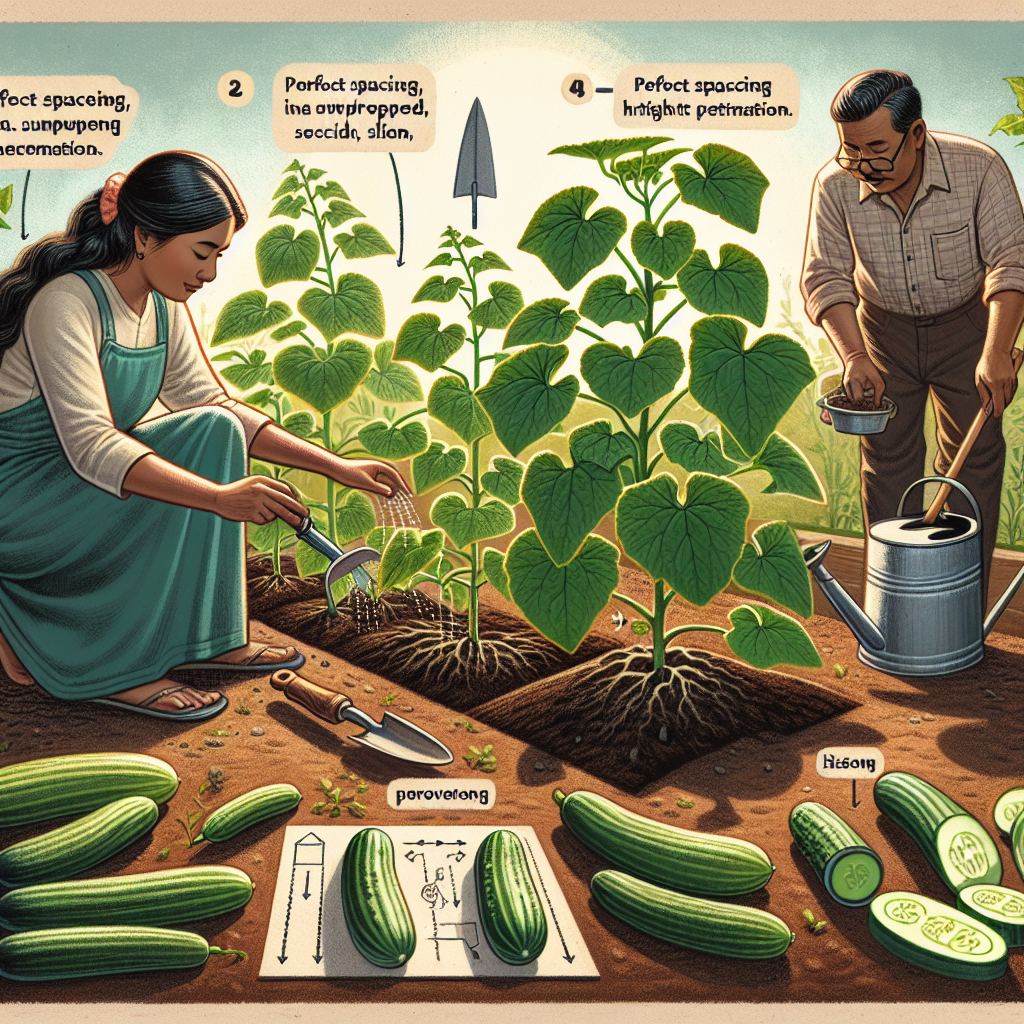
How to help cucumbers grow
Growing Cucumbers: Your Ultimate Guide
Cucumbers are one of the most refreshing and versatile vegetables you can grow in your garden. Not only do they add flavor and crunch to salads and dishes, but they also serve as a great source of hydration. If you're looking to cultivate this delightful vegetable, you may be wondering how to help cucumbers grow successfully. In this comprehensive guide, we'll cover everything from soil preparation to pest management, ensuring you enjoy a bountiful harvest.
Understanding Cucumbers: Varieties and Requirements
Before diving into the specifics of growing cucumbers, it's essential to understand the different varieties available and their specific needs. Cucumbers generally fall into two categories:
- Pickling Cucumbers - Smaller and bumpier, these cucumbers are designed for pickling.
- Slicing Cucumbers - Larger and smoother, these are perfect for fresh salads and sandwiches.
No matter which variety you choose, all cucumbers prefer warm weather and need well-draining soil with a pH of 6.0 to 6.8. Understanding these requirements is crucial for a successful yield.
Preparing Your Garden Soil
Proper soil preparation is fundamental to growing healthy cucumbers. Here are the steps to create an optimal growing environment:
- Select the Right Location - Choose a sunny spot in your garden that receives at least 6-8 hours of sunlight daily.
- Tilling the Soil - Use a garden fork or tiller to loosen the soil, which promotes healthy root growth.
- Adding Organic Matter - Incorporate compost or well-rotted manure to enrich the soil. This addition improves soil structure and nutrient content.
- Testing Soil pH - Conduct a soil test to check pH levels. Add lime to increase pH or sulfur to decrease it as necessary.
Planting Cucumbers: Timing and Techniques
Timing your planting is crucial. Cucumbers are sensitive to frost, so it’s best to plant them after the last frost date in your area. Here’s how you can get started:
- Direct Sowing - Plant cucumber seeds directly in the soil, about 1 inch deep, in rows spaced 3-4 feet apart.
- Transplanting Seedlings - If starting indoors, transplant seedlings outdoors when they are about 3-4 weeks old and have settled down outside for a week or two.
To enhance growth, consider using seedling trays to nurture your plants before transplanting them. This method ensures sturdy plants ready for the garden.
Watering and Fertilization Requirements
Watering is essential for healthy cucumber growth. Here are some guidelines for maintaining optimal moisture levels:
- Consistent Watering - Cucumbers require about 1-2 inches of water per week. Water deeply once or twice a week.
- Avoid Overhead Watering - To prevent diseases, water at the base of the plant instead of overhead.
- Mulching - Apply a layer of organic mulch to retain moisture and suppress weeds.
Fertilization should happen roughly three weeks after planting. Use a balanced fertilizer or one low in nitrogen to promote fruit development instead of excessive foliage growth.
Pest and Disease Management
Cucumbers are susceptible to several pests and diseases, but there are effective management strategies. Here’s how to protect your plants:
- Common Pests:
- Cucumber Beetles - Attract beneficial insects like ladybugs or use row covers to protect young plants.
- Melon Aphids - Monitor for aphid infestation and remove them by washing them off with water or using insecticidal soap.
- Diseases:
- Powdery Mildew - Space plants adequately to improve airflow and apply fungicides as needed.
- Damping Off - Use sterile soil and avoid overwatering to prevent this fungal disease.
“An ounce of prevention is worth a pound of cure.” - Benjamin Franklin
Harvesting Cucumbers: When and How
Knowing when to harvest your cucumbers is critical for the best flavor and texture. Here are some guidelines:
- Timing - Harvest slicing cucumbers when they are 6-8 inches long and before they turn yellow. Pickling cucumbers can be harvested smaller, around 4-6 inches.
- Frequency - Check your plants every few days, as cucumbers grow quickly. Regular harvesting encourages more production.
Use a sharp knife or pruning shears to cut the cucumbers off the vine carefully, avoiding damage to the plant.
Fostering Growth: Tips for Continued Care
To ensure your cucumbers flourish throughout the growing season, consider these additional care tips:
- Provide Support - Use trellises or stakes to support climbing varieties. This not only saves space but improves air circulation, reducing disease risk.
- Prune Wisely - Trimming out the older leaves can redirect energy to the fruits and improve overall plant health.
- Rotate Crops - Practice crop rotation to prevent soil-borne diseases. Avoid planting cucumbers in the same spot for at least three years.
Conclusion
Growing cucumbers can be a gratifying endeavor, provided you understand their needs and how to address them. From proper soil preparation to timely harvesting, each aspect plays a vital role in determining the health and yield of your crop. Remember to observe your plants regularly for any signs of pests or diseases, ensuring necessary interventions can be taken swiftly.
With a little patience and dedication, you will reap the rewards of your labor, enjoying fresh and crisp cucumbers throughout the season. So roll up your sleeves, get your hands dirty, and start cultivating the garden of your dreams!
By Guest, Published on August 15th, 2024